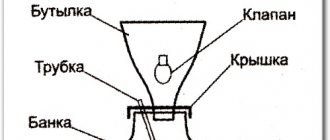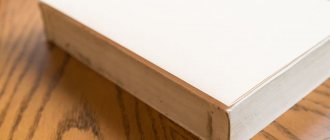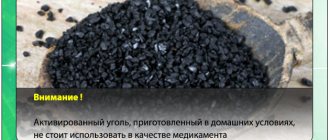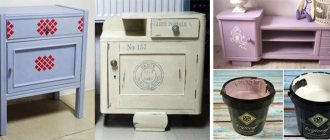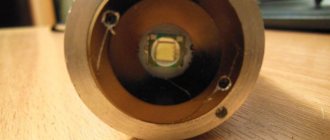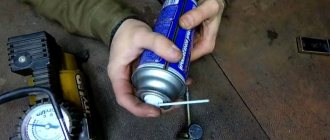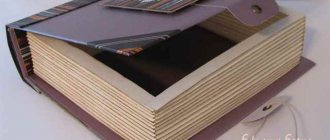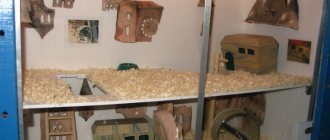Of all the chemical compounds that are used in every household, the most popular is probably copper sulfate. In fact, it is a crystalline hydrate of copper sulfate or copper sulfate. Copper sulfate is poisonous to humans and animals, but does not lose its popularity in the industrial and agricultural sectors. In this article we will look at what copper sulfate is, its uses for various purposes, and how to make copper sulfate at home. The composition of copper sulfate is represented by 5-aqueous 2-valent copper sulfate CuSO4x5H2O. It is a hygroscopic crystalline powder of a blue or dark blue hue. It is sold packaged in 50-100 g bags or bottles.
What you will need
You can buy copper sulfate at any gardening and hardware store. It is sold in packs of 100 grams. The blue color of household vitriol indicates a low degree of purification. The crystals from it are lighter.
Copper sulfate can also be purchased in specialized laboratories. From such vitriol a dark blue crystal will grow, similar to a precious stone.
Container for working solution
Glassware is used, since other materials react chemically with the solution. A half-liter jar with a wide neck is perfect. After the experiment, it is strictly forbidden to use it for food purposes.
Basis for crystallization
A thin blue or black wool thread is used as a base. An adult crystal is translucent, and the base should not spoil the result. An alternative could be thin copper wire, pre-sanded with sandpaper.
If you use copper sulfate from a hardware store in the experiment, you will need to boil the water. To experiment with purified vitriol, use distilled water.
Vitriol is toxic, and you cannot work with it without gloves. It is advisable to wear a medical mask for children of primary school age.
Pencil or stick to secure the base
On it you will hang a thread on which the crystal will grow.
Clear nail polish
To save the crystal
Disposable plastic spoon
Important! Work is carried out only under adult supervision. At the end of the process, hands must be washed thoroughly under running water. You cannot taste the crystal or powder. If copper sulfate gets into your eyes, rinse them with plenty of water.
Application in galvanoplasty.
Copper is the most popular metal in electroplating. As you know, copper coating is soft, quite ductile, and also easily soldered. Let us also note that copper is an excellent conductor of electricity. However, despite such qualities as the final coating, copper is used extremely rarely, since it quickly oxidizes under the influence of atmospheric oxygen and becomes dull. Copper's excellent leveling and covering properties make it ideal for use as a substrate before the application of other metals. In addition, due to its increased softness and ductility, copper can be easily polished to a bright shine, which makes it possible to obtain on it the same bright and shiny layer of any other metal. Copper can fill sharp-edged depressions and smooth out unnecessary surface roughness, therefore, the base metal will be deposited in a perfectly smooth and uniform layer.
How to make a crystal: stages of work
High concentration working solution
Add copper sulfate, spoonful at a time, to water heated to about 80 degrees. The liquid must be stirred constantly so that the powder is completely dissolved. It is important to maintain a constant water temperature; a water or sand bath can help with this. If copper sulfate has stopped dissolving and settles at the bottom, then the solution is ready. On average, 300 ml of water will take 200 grams of the substance.
We move the container with the hot solution onto the cooling surface and wait until the liquid cools to room temperature. This is necessary for the loss of small crystals to begin. After straining the solution through cheesecloth, we examine the crystals and select the largest and most correct in shape. We will use it further as a seed.
Crystal growth medium
We reheat the strained solution in a water bath, again bringing it to a supersaturated state. If the resulting precipitate has not dissolved, repeat the purification. We tie the seed and place it in the jar so that the thread is positioned vertically, without touching the bottom and walls of the container. To do this, tie the thread to a pencil, and fix the pencil itself on the neck, for example, with plasticine. Here you will find detailed instructions and a scientific description of this experiment.
Extracting gold from low-grade ores
Due to the continuous growth of gold mining over the past few decades, a colossal amount of waste has been generated. Such wastes are dumps and tailings. As is known, they also contain a certain amount of valuable minerals, classified as inevitable losses that arise due to imperfections in technology. Today, the technology of the agglomeration flocculation process is quite popular. Thus, waste begins to generate income. Reagents for hydrophobization include the following substances:
- crystalline copper sulfate
- xanthogen
- captax.
The amount of each of these substances is selected based on the composition of the raw materials. Consumption ranges from 40 to 100 grams of copper sulfate per ton of raw material. With an amount of 0.3 g/t in technogenic raw materials, after treatment with copper sulfate the concentration is 7 g/t. And with such a composition it is already possible to work according to the traditional technological scheme and extract additional volumes of gold.
Experiment with copper sulfate and iron nail
It’s all very simple – drop a clean (meaning without rust and oil) iron nail into the vitriol solution and wait. The chemical reaction will take place on its own, without your further participation. The first results will be visible within a few minutes. Well, I advise the most patient to “forget” about what is happening for a couple of weeks. It will be very interesting.
Read more in this article.
Instructions for growing a crystal
There are two technologies for growing crystals from copper sulfate.
- If you don't want to wait a long time, you can use the quick method. This will take about a week, and as a result you will get many small crystals attached to one another, like a colony of mussel shells.
- The second method is longer. It will help you grow a large, solid crystal that looks like a gemstone.
But both of them are based on working with a saturated solution of a substance.
Note! The higher the water temperature, the faster copper sulfate dissolves in it. But when the liquid reaches +80C°, subsequent heating does not in any way affect the solubility of salts.
Fast way
- Take a 500 ml glass or jar, add 200 g of copper sulfate and fill it with 300 ml of water. Place the container in the sand bath and start heating, stirring constantly. The copper sulfate crystals should completely dissolve.
Thoroughly dissolve copper sulfate in warm water - Remove the dishes from the sand bath and place them on a cool surface, such as ceramic tiles.
The solution should cool slightly. Now you need to place the seed in it. It will serve as a crystal of copper sulfate, which must be selected in advance - the largest and smoothest. Place the seed in the solution - Make sure that the seed does not come into contact with the inner surfaces of the glass.
Even if the crystal dissolves, don’t worry, it doesn’t matter. As it cools, the saturated solution releases salts that settle on the thread. The largest amount of vitriol will concentrate at the bottom of the dish, since this is where the glass comes into contact with the cool surface.A saturated solution of vitriol will begin to form crystals on surfaces
- Remove the thread with the formed crystals from the container with the solution.
Repeat the procedure: place the glass in a sand bath and heat it so that the sediment dissolves. Turn off the heat. Without removing the dishes from the bath, cover it with a lid of suitable diameter (for example, a petri dish) and let the solution cool slightly. Thread with the first crystals - Place the thread with crystals in the solution, secure it so that it does not come into contact with the bottom and walls.
Cover the container and leave overnight. In the morning you will find in a glass a large cluster of beautiful crystals of an unusual shape.You can get such a crystal in a day
- You can try to give the cluster of crystals a certain shape. To do this, you need to use wire instead of thread. Bend it into a square, circle, heart or star. The wire will become a strong, stable frame for the future figured crystal. If at the same time you need to limit the growth of some edges, lubricate them with Vaseline or fat.
By growing copper sulfate crystals in a quick way, you don’t have to worry about seeds: you can do without them altogether. The sediment will easily attach to the thread.
Second way
In this case, you can grow a large crystal of copper sulfate, but it will take much longer. In addition, unlike the first method, the choice of seed is fundamentally important. In addition, you will have to make sure that small crystals do not stick to it.
The larger and smoother the crystal of copper sulfate selected from the total mass is, the more beautiful the final product will be.
You will need 200 g of warm water and about 110 g of copper sulfate.
Manufacturing instructions:
- mix vitriol and water in a suitable container (glass or jar), leave for a day. Stir occasionally: the active substance should completely dissolve. After this, filter the solution through cotton wool or special filter paper. The sediment remaining on the surface of the filter can be dried and used again if necessary;
- pour the resulting solution into a clean container;
- select a crystal for seeding and tie it to a thread (hair). Fasten the second end of the thread to a stick and place it horizontally on the container. The seed must be lowered into the solution in a strictly vertical position. Cover the dishes with a piece of cloth to prevent dust from getting inside;
Be sure to cover the container with the solution and seed with a piece of cloth
You may encounter some difficulties while working. They are easy to overcome by following simple rules.
When exposed to air, the copper sulfate crystal loses some of its moisture, erodes and collapses over time. To avoid this, store it in a tightly closed container in a cool place. Experts advise covering it with colorless varnish - this will create a reliable protective film.
Experiments with eggs
Denaturation (destruction) of protein
Take a raw egg and separate the white from the yolk. Place the protein in a glass, add a little water, mix and divide into two parts, that is, into two experiments. Add a little copper sulfate to the first part. After mixing we get this incomprehensible mass:
Biuret reaction
To the second part of the protein add a little sodium hydroxide, and then a few drops of vitriol. We obtain a bright purple color of the solution.
You can read more about these reactions here.
Preparatory activities
Copper sulfate can be purchased at almost any hardware store. It is actively used in agriculture for pest control. However, we should not forget that this substance is toxic. When working with copper sulfate at home, be sure to use rubber gloves and prevent it from getting into the esophagus and mucous membranes. After finishing work, wash your hands thoroughly in running water.
You can grow a real miracle from copper sulfate, but do not forget about safety precautions during the manufacturing process
In order to make a crystal, you will need:
- water - if possible, use distilled or, in extreme cases, boiled. Raw tap water is absolutely not suitable due to the content of chlorides in it, which will react with the solution and deteriorate its quality;
- copper sulfate;
- cup;
- wire;
- wool thread - make sure it is thin. You can use long hair. Copper sulfate crystals are transparent and the thread should not be visible through them.
When placing the seed in a container with a solution, make sure that it does not come into contact with the walls or bottom of the container. This can disrupt the crystal growth process and its structure.
Photo gallery: options for DIY crystals
You can grow one large crystal By experimenting with temperature and other parameters, you can achieve different shapes and sizes. Sometimes you get many small crystals. With backlight, the crystal looks especially impressive. Elongated crystals are good to use as part of compositions
Hygienic requirements
First of all, it is worth taking care of the necessary sterility in which the experiment should take place. Ideally, an amateur chemist's hair should be covered with a hat, and it is best to wear rubber gloves on his hands. Copper sulfate, if handled carefully and wisely, does not pose any danger to the human body.
All of the above precautions are needed primarily to protect the solution from dust and small particles of foreign materials getting into it. This is extremely undesirable, since other crystals may begin to grow on similar grains of sand that accidentally fall into the liquid, which will slow down the development of the main stone.
Useful tips
The rate of the crystallization process is directly affected by the saturation of the solution. After a couple of days, you can remove the crystal from the prepared solution and change the solution to a more saturated version.
Growing crystals is a fascinating process that allows the younger generation to develop a cognitive interest in natural science subjects.
If the process is too slow, you can expect to get one large crystal. At a high rate of crystallization, there will be many small crystals among the products.
Business idea: how to grow ruby, sapphire and other artificial stones?
Making stones can be a good business idea. Crystals are not precious, so a corresponding license is not required.
For the mass cultivation of artificial crystals, you need a special apparatus with which you can make durable stones of various colors. The Verneuil apparatus, named after its inventor, will help in growing ruby, sapphire, emerald, topaz, and diamond crystals up to 30 carats in a matter of hours. To grow crystals of different shades, you need to select the type and composition of salts - this comes with experience. The resulting stones are distinguished by their transparency and beautiful tints. They lend themselves well to grinding and cutting. The apparatus for growing crystals consists of:
- funnels into which powder mixed with Al₂O₃ and Cr₂O₃ is placed;
- oxygen-hydrogen burner;
- iron stand on which the crystal grows.
The business of manufacturing gems, including rubies, is very profitable. Why? To produce a 30-carat ruby, you will need only 3 hours of time, 9 kW of electricity, 0.2 g of chromium oxide and 6 g of aluminum oxide. In total, the cost for one large stone will be about $3. In a couple of months of work, you can recoup the starting costs for the device (36 thousand rubles) and containers (4 thousand rubles). It is not necessary to rent a room, because it is possible to grow crystals at home.
It is important to find regular customers and identify a sales market for yourself. You can sell your products to jewelry companies, specialized stores and private customers. The entrepreneur will calculate how many units of goods need to be produced per day after developing a customer base.
Sources
- https://MoyKamen.com/interesnoe/kak-vyrastit-kristall-iz-soli.html
- https://legkovmeste.ru/poleznye-sovety/kak-vyrastit-kristall-iz-mednogo-kuporosa-v-domashnix-usloviyax.html
- https://ogorod-u-doma.ru/interesnoe/kak-vyrashhivat-mednyj-kuporos-v-domashnih-usloviyah.html
- https://agroklassiksnab.ru/prorashhivanie/kak-vyrashhivat-mednyj-kuporos-v-domashnih-usloviyah
- https://moon-flower.ru/doma/kak-vyrashhivat-mednyj-kuporos-v-domashnih-usloviyah.html
- https://lachat.ru/handmade/kak-vyrastit-kristall-v-domashnih-usloviyah
- https://mining-prom.ru/cvetmet/med/primenenie-mednogo-kuporosa-/
Various ways
We bring to your attention several more master classes. Crystals from copper sulfate can be grown in a slightly different way.
The second method is to place the jar with the “bait” in an insulated container or wrap the jar in a blanket or other warm thing. This way you can achieve a slower cooling of the supersaturated solution. This option is more complex than the one described earlier, but as a result of its use, pebbles of a very regular shape are obtained. The next way to grow a crystal from copper sulfate is the easiest.
There is no need to make a “bait”. A thread is placed in a container with a supersaturated solution. In this case, it is best to choose the one that is made of the fluffiest material. Its end is tied to a faceted pencil, which is placed on top of the jar on its walls. A crystal will form on the thread itself.
Depending on temperature conditions, the growing experience can last from one week to several months.
Using table salt (NaCl) at home
It is advisable to use regular rock salt, which can be purchased at any grocery store. Not suitable with additives (potassium chloride or iodine).
- table salt - 0.2 g;
- distilled water;
- glass container;
- filter paper.
Table salt dissolves equally well in warm and cold water. The problem with sodium chloride is that it forms a lot of small crystals. It is very difficult to grow a large specimen, as it consists of small structures that are easily destroyed.
However, they are beautiful in their own way due to the unique shape of each crystal. In addition, they can be painted in various colors. Printer ink or a solution made from the contents of felt-tip pens are suitable for these purposes.
The principle of cultivation is the same as with copper sulfate.
Beautiful and colorful crystals
How to grow a beautiful crystal? To do this, it is necessary to use aluminum alum. This substance is sold through pharmacies and is sold at a low price.
Alum (6 tbsp) should be mixed with 0.5 liters of boiled water until it is completely dissolved. After this, the mixture should be left for several days. At this time, you cannot shake the jar or mix the solution: the liquid must be at rest.
After a week, crystals form at the bottom of the jar. You need to select the largest one, make a hole in it and hang it on a thread. The crystal is placed in a strained solution, and the container is covered with thick paper. After 2 weeks, the beautifully shaped stone will grow several times larger. It looks very attractive and has smooth edges.
To make colored crystals, you can use not only food coloring and copper sulfate. To create a red stone, you need a substance called hexacyanoferrate III (red blood salt). For 100 g of powder, take 170 ml of water at a temperature of 95°C and mix the components.
To make a single stone, you need to take a crystal of table salt hanging on a thread and send it into the solution. To grow a garden of ruby crystals, you need to place a granite stone in a container. The red crystal takes about a month to mature. When its top appears above the surface of the water, the pebble is removed.
To get a magical colored crystal from sugar, salt or other components, you can use colored manicure polish. Dyes for Easter eggs are also added to the solution.
